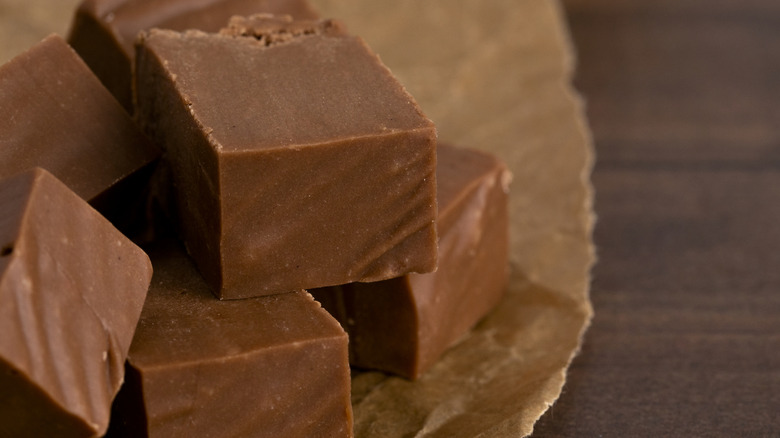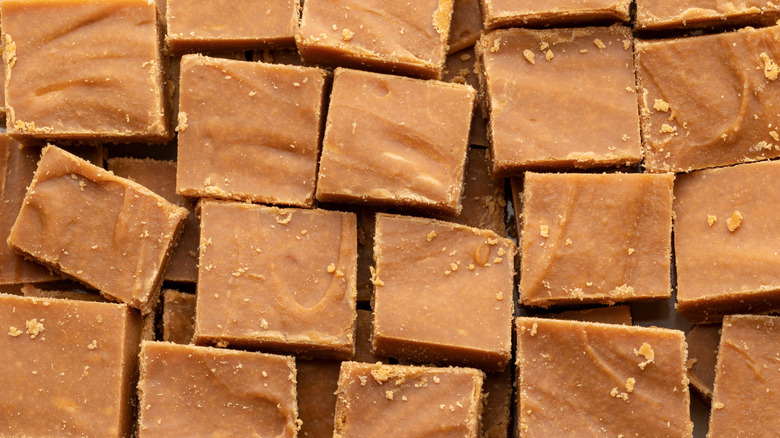Ground Beef In Dessert? The Unlikely Combination That Used To Be Popular
For decades, my dad's side of the family owned one of the largest meat-packing plants and slaughterhouses in the country. As a kid, my dad ate red meat for at least one meal every day. If that's how much meat was available to a large family after purchasing steers, imagine how much is available to the people who raise them. Cattle ranchers needed to get creative with their meat before their harvest went bad. And for some, that meant making desserts.
Florence E. Weist, from Muddy Creek Ranch in Montana, included her beef fudge recipe in the "Poll-Ette Hostess Cookbook." The 1967 publication was written by the wives of cattle farmers and ranchers from around the world. Made with chocolate chips, marshmallow cream, vanilla, chopped walnuts, evaporated milk, and ground roast beef, beef fudge is, as Weist noted in her recipe, "An elegant way to use up leftover roast beef!"
Mid-Century Menu blogger RetroRuth actually tested this vintage beef fudge recipe, and was shocked to find that her family preferred the beef fudge to regular chocolate fudge. In her review, RetroRuth noted a curbed sweetness and hint of salt, perhaps from the melted fat. "It was also smoother in texture and slightly more gooey than the non-beef fudge," she shared.
Meat and Sweet
The contemporary chocolate-and-meat sweet treat isn't a novel concept. Remember the chocolate-covered bacon trend of the mid-late 2000s, rife with bacon-chocolate bark and bacon-chocolate chip cookies? The breakfast tie between bacon and maple syrup or honey makes this connection more logical. But unlike chocolate and red meat, it didn't have centuries of culinary history supporting its union.
"It was only after chocolate was imported to Europe in the 1500s that it was first combined with sugar, but that doesn't mean that European chefs didn't use it in savory dishes as well," writes Michael Laiskonis for Gourmet. Chocolate, with its complex flavors and rich color, complements meaty flavors and other spices. The Italians used it to make agrodolce, a wine- or vinegar-based sauce, while in France and Spain, it found its place in stews, gamey meats like coq au vin, and pan sauce recipes. Perhaps the most commonly known use for cooking with chocolate is Mexico's heaven-sent molé sauce.
Once you really think about it, a chocolate-and beef dessert isn't a stretch at all — it just sounds odd outside of fine dining and millennia after ancient civilizations discovered the best food in the world. So be bold like the cattle ranchers of yesteryear and the brave bakers of today, and don't knock it till you've tried it. What are you going to do with leftover roast beef, anyway? Freeze it? This is your sign to try something different. You could discover a new crowd-pleaser, or at the very least, have an amusing story to tell at your next dinner party. So go ahead — "beef up" your desserts! And if it's gross and no one likes it, you can totally blame me, a carnivorous chocoholic.

